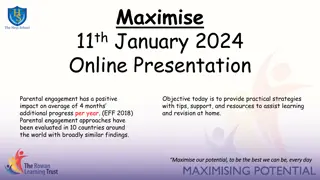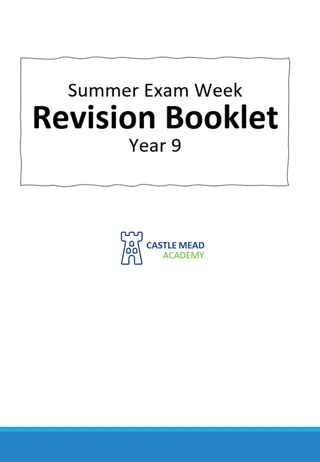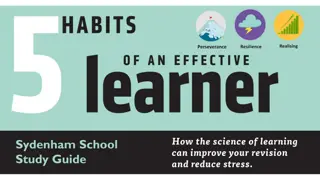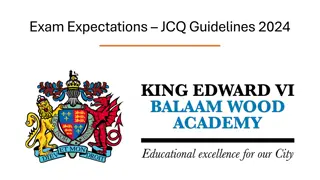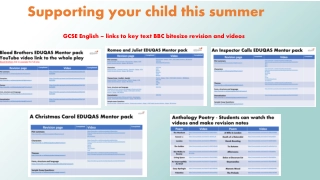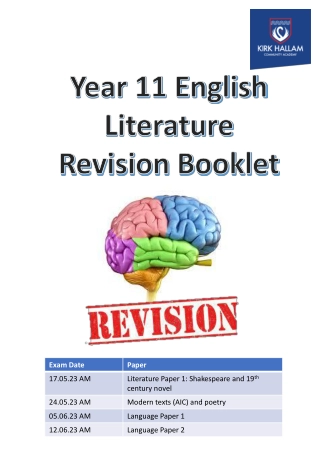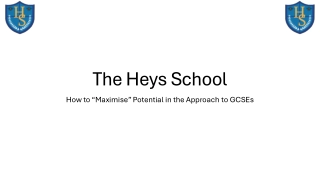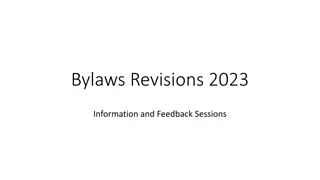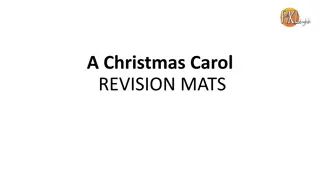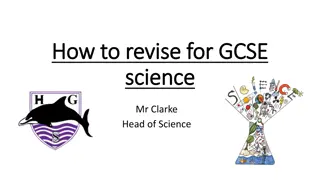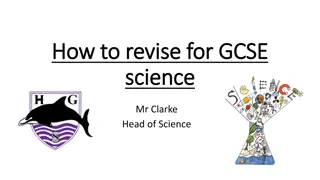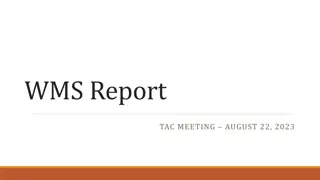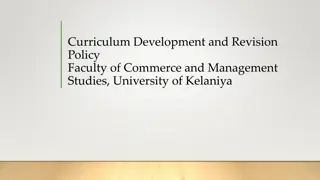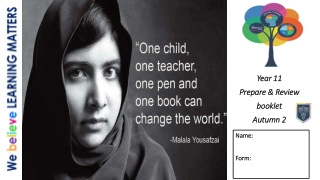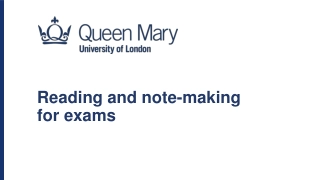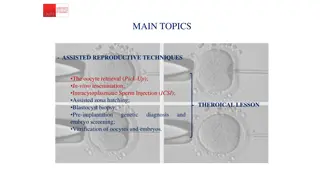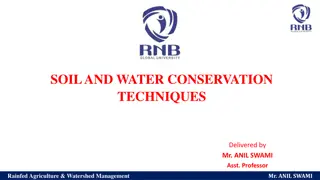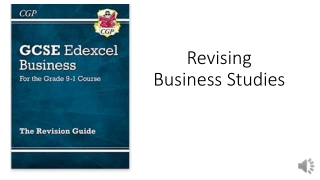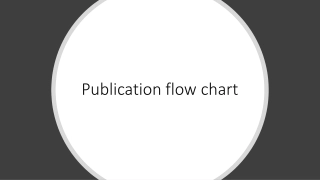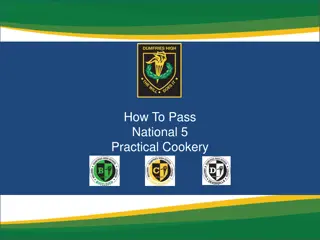Practising Further Revision Techniques
Enhance your study skills with effective revision techniques like Leitner Flashcard method and Cornell Notes. Explore various retrieval activities to improve retention and create a structured revision schedule. Learn how to make effective flashcards and optimize your study sessions. Boost your academic performance by implementing these proven strategies.
Download Presentation
Please find below an Image/Link to download the presentation.
The content on the website is provided AS IS for your information and personal use only. It may not be sold, licensed, or shared on other websites without obtaining consent from the author. Download presentation by click this link. If you encounter any issues during the download, it is possible that the publisher has removed the file from their server.
Presentation Transcript
Practising Further Revision Techniques
Y11 Mantra Be selfish for my grade 2
Do Now On a MWB, answer the following questions then discuss with your tutor. 1. What were the four retrieval activities that you used to revise in Last week s session? 2. What was your favourite one and why? 3. Which one did you find the least helpful and why? 4. What would you still like to know more about when it comes to revision? 3
Aims of Todays Session By the end of today s revision session, you will have: 1. Practised the Leitner Flashcard revision method. 2. Practised the Cornell Notes revision method. 3. Planned out a revision schedule for the first two weeks of this half term. 4. Chosen a different revision method for each revision slot on your new two week schedule. 4
Leitner Flashcard Method How to make effective flashcards Lots of people make the mistake and do not create effective flashcards. Here are some simple tips so you can avoid these common mistakes: Make your own flashcards. One question and one answer per card. Use pictures/diagrams and words. Use mnemonic devices. 8
Leitner Flashcard Method BOX1 Everyday BOX2 BOX 3 Friday Tuesday & Thursday 9
Leitner Flashcard Method 1. I answered a flashcard correctly from Box 1. Where do I put it now? 2. I answered a flashcard incorrectly from Box 1. Where do I put it now? 3. I answered a flashcard correctly from Box 2. Where do I put it now? 4. I answered a flashcard incorrectly from Box 2. Where do I put it now? 5. I answered a flashcard correctly from Box 3. Where do I put it now? 6. I answered a flashcard incorrectly from Box 3. Where do I put it now? Box2 Box1 Box3 Box1 Box3 Box1 11
Leitner Flashcard Method BOX 3: Friday BOX2: Tuesday& Thursday BOX1: Every day 12
Cornell Notes Method There are many different ways of taking notes in school or at the university. Some prefer to take a structured approach and use an outline method to take notes, some may prefer a visual way and draw mind maps, some may even use no structure at all. However, there is one note-taking techniquethat is superiorto others in many cases and science has proven that it is not only more efficient but also makes it a lot easier to review notes, for example when preparing for an exam. The technique we re referring to is called CornellNote Taking . It is a system for taking, organizing and reviewing notes and has been devised by Prof. Walter Pauk of Cornell University in the 1950s. How to TakeCornell Notes It requires very little preparation which makes it ideal for note taking in class. The page will be divided into 4 or sometimes only 3 different sections: Two columns, one area at the bottom of the page, and one smaller area at the top of the page. The idea behind this is very easy. All actual notes from the lecture go into the main note-taking column. The smaller column on the left side is for questions about the notes that can be answered when reviewing and keywords or comments that make the whole reviewing and exam preparation process easier. When reviewing the notes, a brief summary of every page should be written into the section at the bottom. Besides being a very efficient way of taking great notes in class, Cornell note taking is THE perfect tip for exam preparation. Here s why: The system itself encourages you to reflect on your notes by actively summarizing them in their own words. Often, this can already be enough to remember study notes and to successfully pass an exam. 16
Planning your Revision Schedule MONA TUESA WEDSA THURSA FRIA SUBJECT English Maths Science FOCUS MONB TUESB WEDSB THURSB FRIB SUBJECT English Maths Science FOCUS 17
Summary In summary then, today we have: 1. Practised the Leitner Flashcard revision method. 2. Practised the Cornell Notes revision method. 3. Planned out a revision schedule for the first two weeks of this term. 4. Selected a different revision method to use for each revision slot on your revision schedule over the next two weeks. 18
Y11 Mantra Be selfish for my grade 19



